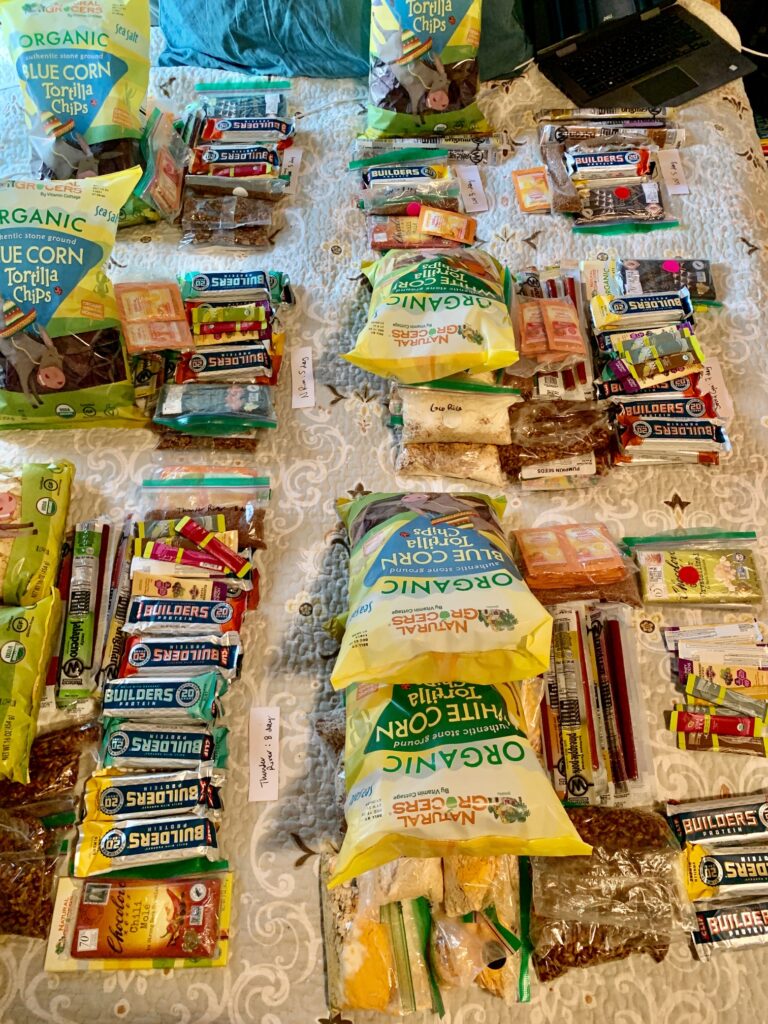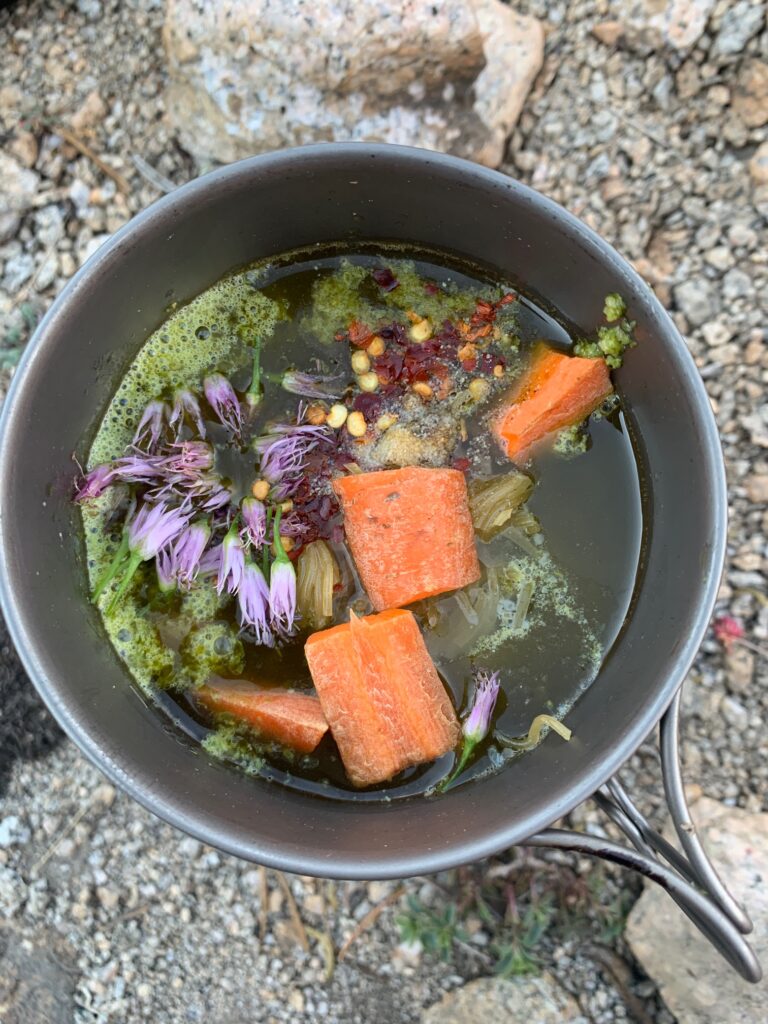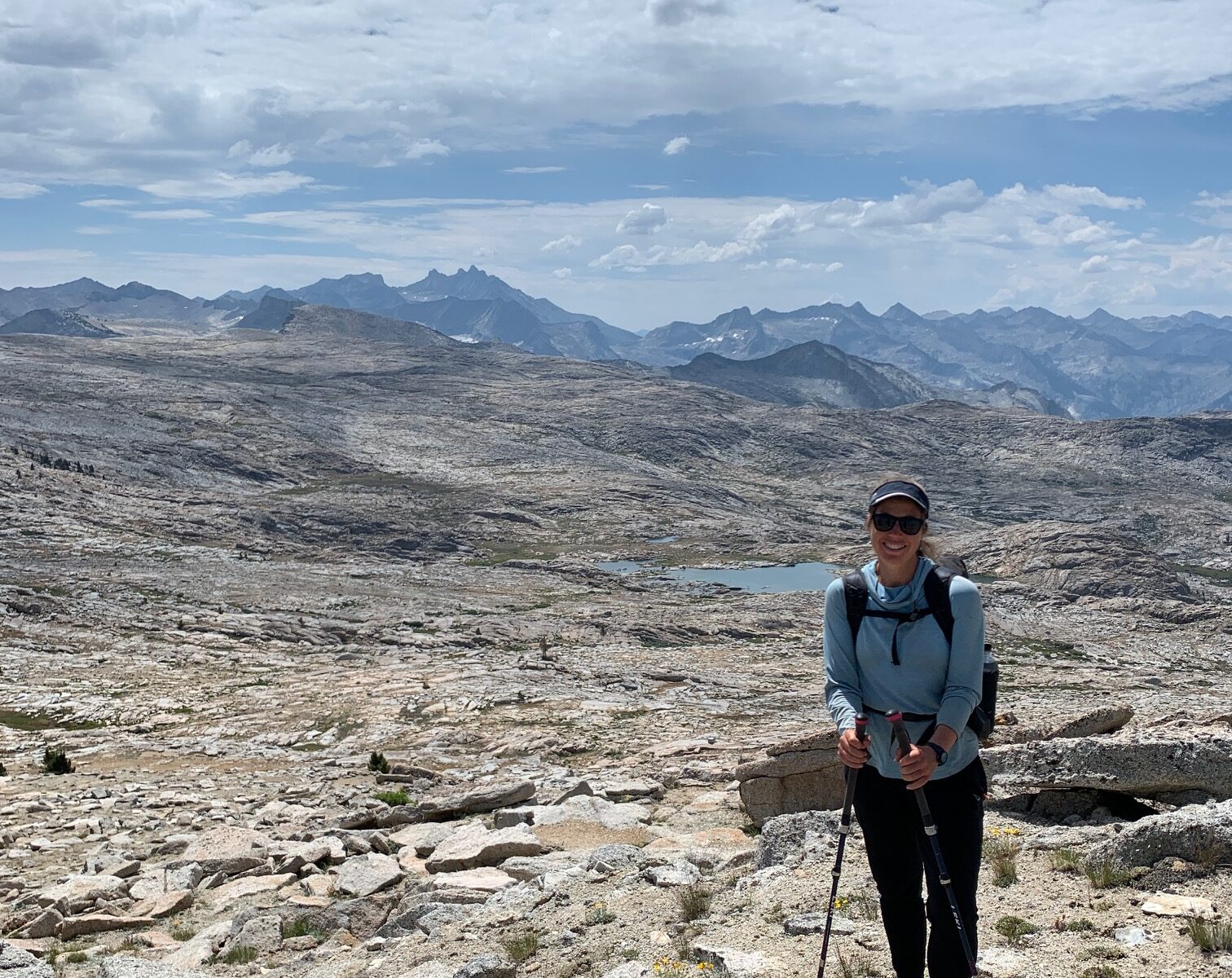Why spend $500 on a 14oz tent and then carry 2 pounds too much food?
This year, I’ve helped over 400 clients prepare for and execute backcountry trips. As a guide, online instructor, and operations coordinator for Andrew Skurka’s education-focused backcountry trips and online planning course, I’ve had the privilege to support clients through the most common stumbling blocks. One that comes up repeatedly both in the planning stage and in the field is uncertainty about how much backpacking food to pack. In most cases, people end up packing way too much food and therefore carrying unnecessary weight.
For how much time, money, and effort goes into lightening one’s pack, it’s unfortunate to see people negating the payoff by carrying excess food weight. To be clear, a little bit of buffer, such as an extra meal or bar, is a great idea. Carrying a few pounds excess is not.

Case Study: 5-weeks of Backpacking Food for the Grand Canyon
As I prepare food for an upcoming 5-week hike in the Grand Canyon, I wanted to share my process and techniques for keeping food weight appropriate for the length of trip I’m on. With longer distances between food caches (e.g. 5-11 day carries) and extra safety gear for this trip, packing efficiently in terms of food weight is critical.
To keep food weight low, there are two key factors I focus on: packing the right amount of calories and packing the most calorie dense foods.
Determining Backpacking Food Calorie Needs
To determine how much food to take, I take past experience into consideration and calculate calories. You can use a free BMR calculator online, and adjust for activity (see this video). Then test it out and take note of how much food you returned with or whether you ran out. Like most hikers, I get hungrier the longer a trip lasts. For that reason, I generally plan for a higher calorie intake later in the trip.
For this trip, for example, I’m planning about 2300-2500 calories for the first two weeks, then 2700 for the last 2.5 weeks. Cold temperatures, a high amount of elevation gain, and cross country hiking over uneven surfaces make me hungrier, so I also try to plan for that. As far as macronutrient ratios, I feel best eating about 50-60% fat, 20% protein, and 20-30% carbohydrates. See this video on macronutrients for backpacking.
Choosing Calorie Dense Backpacking Food
As I discussed in my food planning for the Great Basin Trail, I prioritize trail food that is energy-dense, meaning high calorie per ounce. I aim for >125 calories per ounce, but some foods fall short of that which I’m okay with if it’s a high protein food. At nine calories per gram for fat compared to four calories per gram for protein or carbohydrate, this makes fat a good option for weight efficiency for long distance hiking. For a complete breakdown of the benefits of a higher fat diet for backpacking, see this post.
By focusing on packing the right amount of food and packing about 50% of my calories as fat, my food weight per day ranges from 0.93 pounds at the beginning of the trip to 1.29 pounds toward the end of the trip when I plan to eat more calories. For those interested, my food for this trip is all gluten free, with a high priority on nutrient density and antioxidants, and simplicity.
Hopefully this helps you with your own meal planning for your next backpacking trip.
If you’re interested in the blueprint I use to plan my recipes and meals for every single backpacking trip I take whether it’s a few days or a few months, I invite you to check out the backcountry meal planning course.
I dumped all my knowledge from training as a nutrition coach and my experience from 10,000+ miles of backpacking into this course to help streamline the process for others. We cover how to determine your calorie and macronutrient needs, how to create a meal plan (including templates), creating a resupply plan, creating your own balanced recipes, and much more.
Join us in the Performance Nutrition and Meal Planning for Backpackers course.



One Reply to “How to Pack the Right Amount of Backpacking Food: 5 weeks in the Grand Canyon”